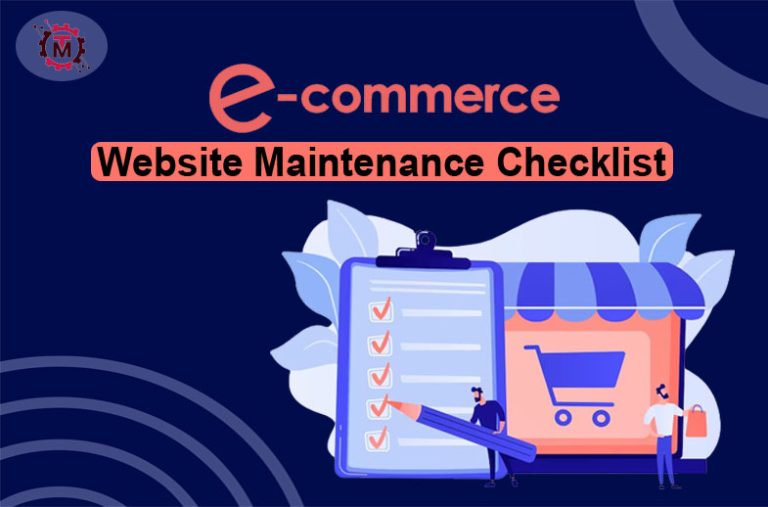Maintaining a successful e-commerce website is more than just a one-and-done task because it requires more assignments to be done. An e-commerce website demands continuous attention and supervision to stay competitive, secure, and user-friendly. It is essential that you do not neglect maintenance to prevent yourself from lost sales and security vulnerabilities. Moreover, this strategy will help you to reduce a decline in user experience.
In this article, we will tell you about how you can maintain your online store in tip-top condition.
What is the Ecommerce Website Maintenance Checklist?
An e-commerce website maintenance checklist is a systematic list of responsibilities that e-commerce website proprietors have to perform frequently to ensure the smooth operation, safety, and effectiveness of their online shops. This checklist allows organizations to pick out and deal with issues and enhance and hold their e-commerce websites to offer a fine customer experience and maximize sales.
Ecommerce Website Maintenance Checklist
Businesses need to understand that maintenance of an online store is as essential as physical stores. You will require a list of tasks that you should perform to maintain your online store effectively. Here, you will get an ecommerce website maintenance checklist:
Regular Content Updates
You should frequently update product listings, descriptions, and images to keep your website fresh and engaging. Make sure that outdated or discontinued items are removed promptly from the store.
Performance Optimization
Regularly assess and optimize website speed to provide vast access to your online store to your customers. You need to compress images, minimize HTTP requests, and leverage browser caching to ensure fast loading times.
Security Checks
Perform security audits and scans regularly to make your online store a secure shopping place for your customers. You can install security patches, update plugins, and employ strong password policies to protect customer data.
Mobile Responsiveness
You are free to test your site on different smartphone devices to make sure it is responsive on various devices. Moreover, you can find the user-friendly factor of your online store on smartphones and tablets.
Browser Compatibility
Check the compatibility of your website with different browsers like Chrome, Firefox, Safari, and Edge to provide a consistent user experience. This will establish you as an authoritative figure in your relative industry.
SEO and Analytics
You should optimize your website for search engines and regularly analyze traffic and user behaviour using tools like Google Analytics. This process will allow you to adjust or change non-performing factors to acquire better outcomes.

Inventory Management
Monitor and update your product inventory to prevent overselling or displaying out-of-stock items. This will always enhance the curiosity level of customers about your products, which will surely decrease the bounce rate of your website.
Payment Gateway Maintenance
You should ensure that payment gateways are functioning correctly and securely. Test payment processes regularly to confirm that your payment methods are secure.
User Experience Testing
Conduct usability tests to identify and fix any issues in the user journey, such as navigation or checkout process problems. This will assist you in delivering an efficient user experience to your customers to enhance their interest.
Customer Support
You are allowed to offer responsive customer support and troubleshoot any issues promptly. This may include responding to customer inquiries and resolving disputes.
Legal Compliance
Stay updated with e-commerce laws and regulations in your region regularly. This can include privacy policy updates, GDPR, and ADA compliance to make your performance better overall.
Backup and Recovery Plans
Implement regular backup procedures and establish recovery plans to protect against data loss and site downtime. This will assist you in recovering your data when it gets lost in the time of any natural disaster.
Third-Party Integrations
You need to keep third-party integrations like shipping and inventory management systems updated and functional to enhance your functionality. This will ensure customers that their delivery will be on time.
A/B Testing
Run A/B tests to experiment with different layouts, product placements, and marketing strategies to optimize conversion rates. A/B testing is helpful in adjusting your non-performing factors to enhance your progress.
Email Marketing
You should maintain your email list and create and send newsletters to your email subscribers. Moreover, you are free to use email automation to engage with customers and drive sales.
Quality Assurance Testing
Regularly test your website for bugs, broken links, and display issues to ensure a seamless user experience. This strategy will help you to provide a better user experience to your site visitors, who have higher possibilities of converting into loyal customers.
Scalability Planning
You have to prepare your website to handle increased traffic during peak seasons or marketing campaigns without performance degradation. This will provide your website with a higher scalability to perform well and achieve better outcomes.
Conclusion
A comprehensive e-commerce website maintenance checklist is essential to perform certain tasks to do well with your online store. By following this complete e-commerce website protection maintenance checklist, you can ensure that your online store remains competitive, secure, and customer-friendly. You must not forget that retaining a hit e-commerce website is an ongoing system that calls for dedication and attention to detail. That’s why you must often examine your internet site’s overall performance, protection, and user experience to live in advance in e-commerce.


